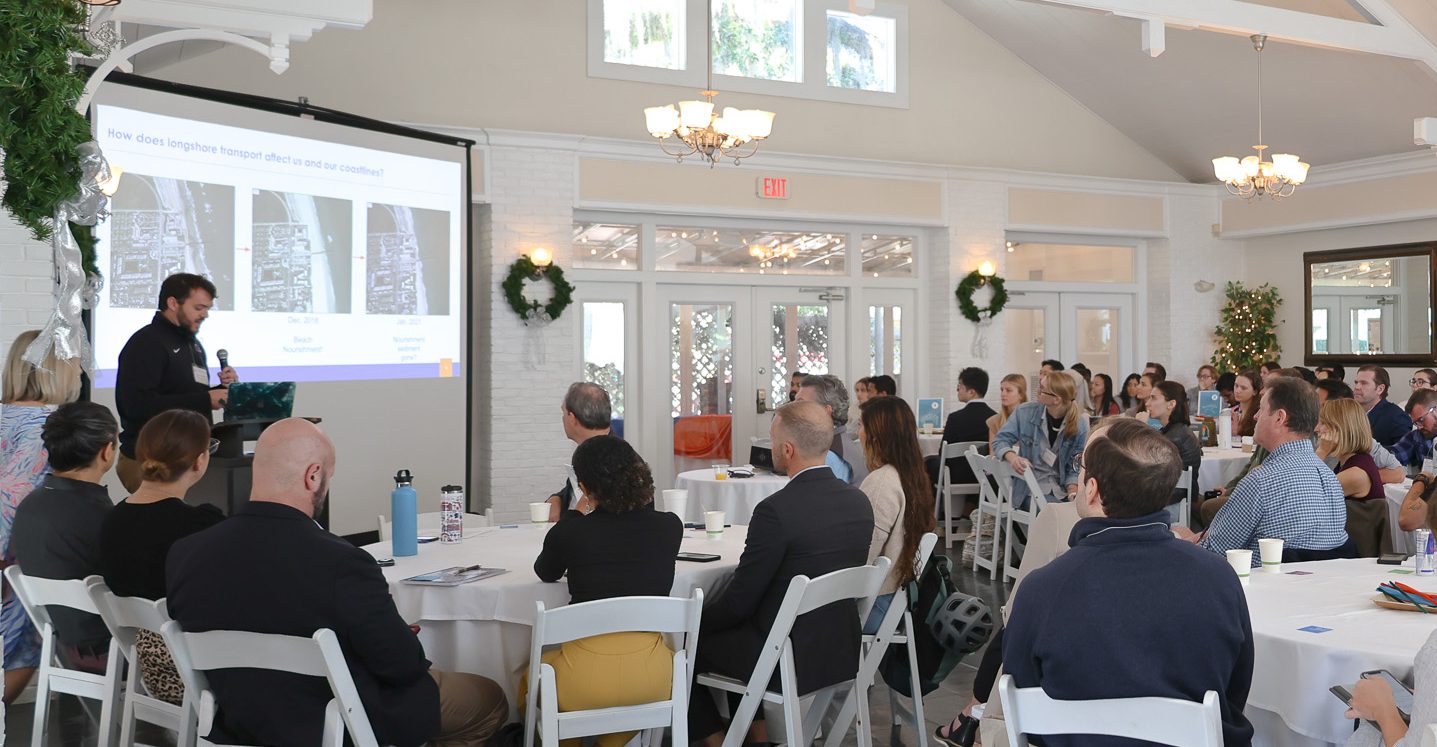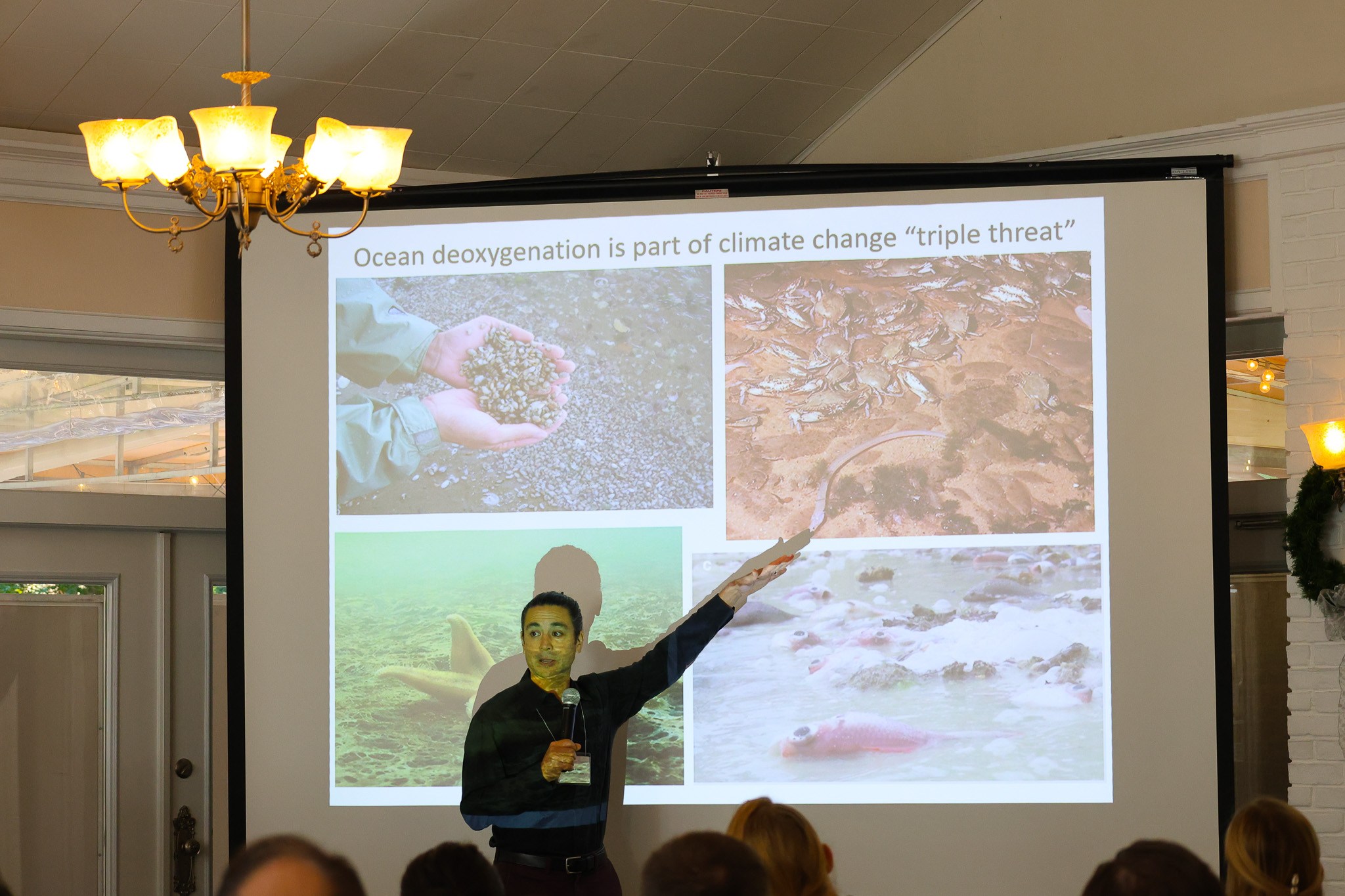When it comes to coastal erosion, there’s a lot at stake in places like Ponte Vedra Beach where nearly $200 million has been spent in the last 25 years to replenish beach sand. Copeland Cromwell, a Ph.D. student in the Department of Geological Sciences at the University of Florida, is using 40 years of satellite imagery to study sediment movement along Anastasia Island just south of Ponte Vedra Beach, which may prove valuable in guiding future beach nourishment to maximize the return on investment. Cromwell was one of four researchers who took part in a lightning talk series at the Optimizing Solutions for Resilient Coasts summit held at Sweetwater Inn in Gainesville on December 1.

The lightning lineup also featured Nick Chin, a Ph.D. student in the environmental engineering sciences department, who is leveraging machine learning to uncover the causes, or “recipe,” of red tide.
“I’m really grateful that I was able to present at the CCS summit,” said Chin. “Producing the lightning talk encouraged me to translate the work into a concise message which I’ve found beneficial as I continue to advance the communication of my research.”

Britney Hay, also a Ph.D. candidate in the environmental engineering sciences department, spoke about her research into the effectiveness of adding sediment layers to bolster salt marshes against sea level rise. While this strategy has been successful in temperate regions like New England, Hay noted that it has not been as widely studied in Florida, a subtropical environment where mangroves are moving further north due to rising temperatures.

Andrew Altieri, Ph.D., assistant professor in the environmental engineering sciences department, rounded out the session with a talk about his work to understand factors that increase coral restoration success in the tropics against the threat of deoxygenation, or reduced oxygen conditions.

These science bites sparked lively conversations across disciplines among the more than 130 attendees from industry, academia, nonprofit and government sectors.
“One of the great things about the CCS summit this year is that I had several attendees from outside of academia approach me after my talk to discuss my work,” said Cromwell. “It was very rewarding to engage with people from different fields that were interested in the methods and results of my work, and to discuss how it could be applied in those fields. At many academically focused conferences, we don’t get to interact with people outside our fields who are interested in putting these methods into practice.”